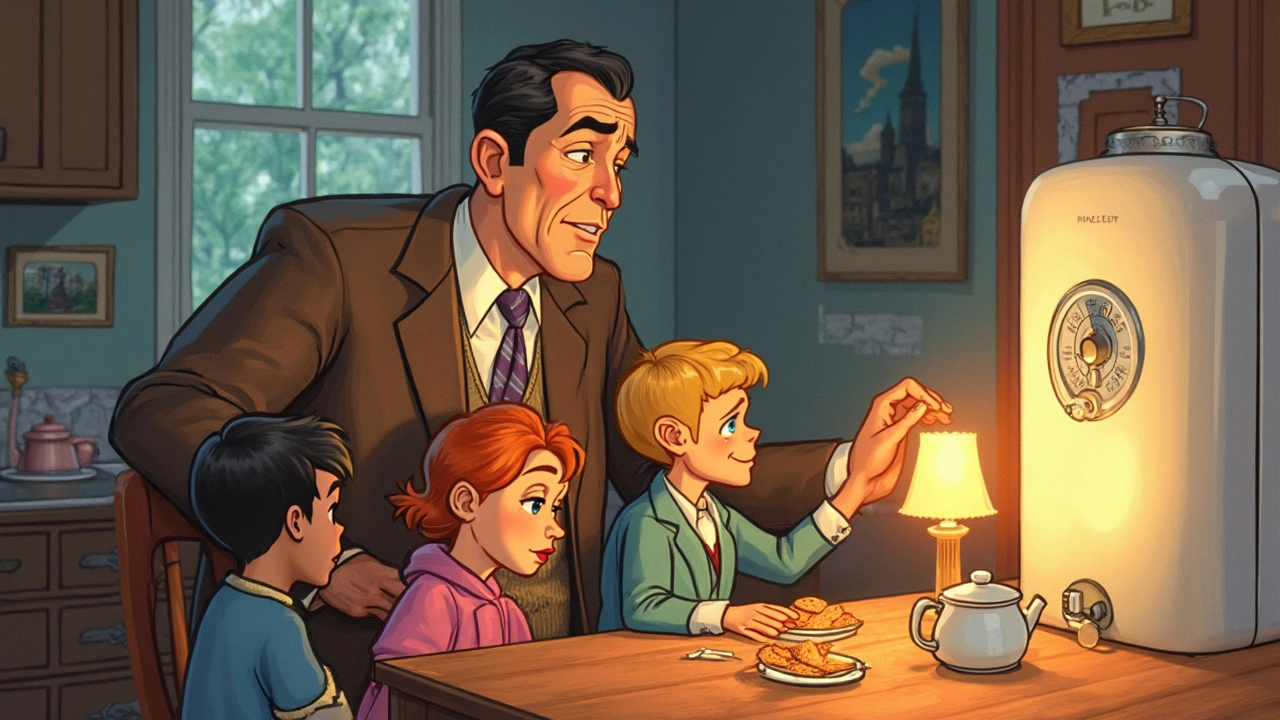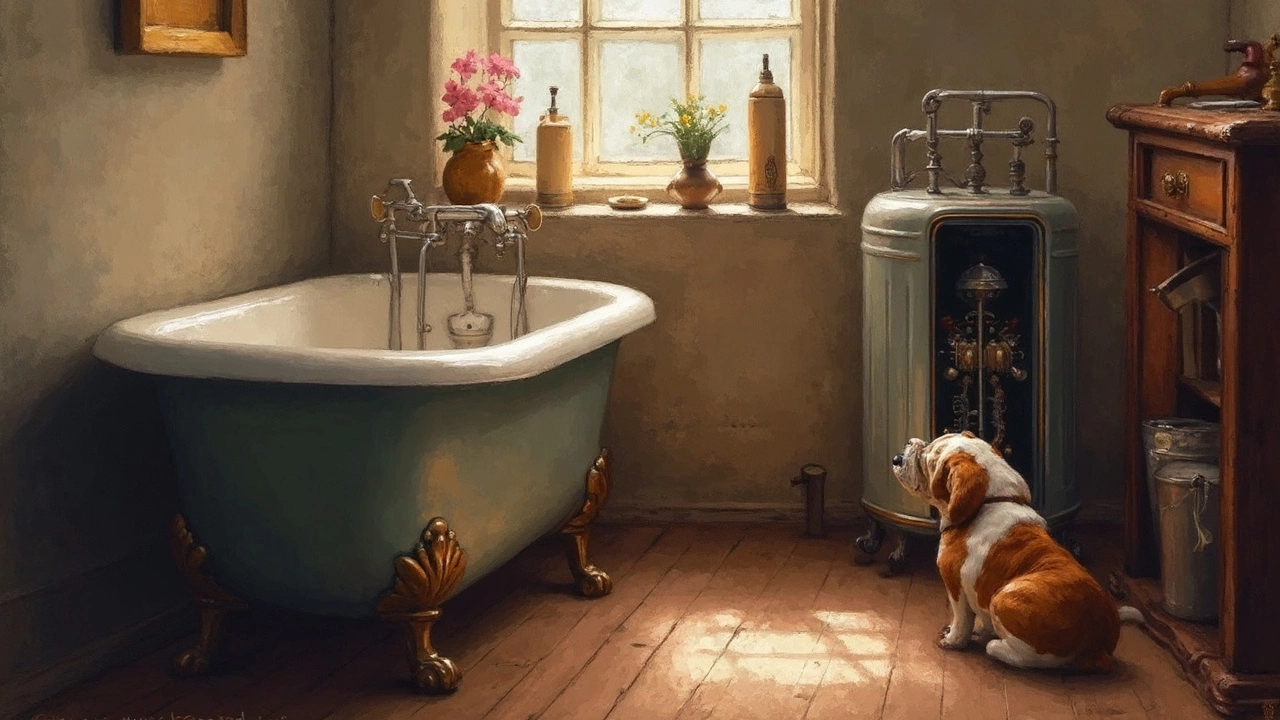Got cold water when it should be hot? That's a real bummer, especially when you're half-awake in the shower. Before you go into full panic mode and start dialing for professional help, it's worth taking a closer look at your hot water heater's thermostat. Your thermostat is like the brain of your water heater—it tells it how hot the water should get. If something goes off with it, you’re stuck with lukewarm or even cold water. So, how can you figure out if it's busted?
First, you'll want to check for symptoms like inconsistent water temperatures or no hot water at all. Sometimes the fix is just tweaking the thermostat, but other times it might be dead as a doornail. Dive into the nitty-gritty details of your thermostat—see if its settings have changed or if it looks worn out. A basic understanding of its function helps you pinpoint what's wrong.
Testing might seem daunting, but it’s easier than you think. You’ll only need a multimeter and a little patience. This tool can tell you if your thermostat is doing its job or slacking off. By flipping the breakers, you can safely check if electricity is flowing as it should be.
DIY options are on the table once you've figured out there's an issue. Often, resetting the device or fixing loose wires is enough. Changes in water hardness or other external factors can cause problems over time. If you're still facing ice-cold showers, it might be time to get a new thermostat—these gadgets don't last forever. So let’s give yours a health check before calling in the cavalry.
- Spotting the Symptoms
- Get To Know Your Thermostat
- Testing the Thermostat
- DIY Fixes Before Calling a Pro
- When to Replace the Thermostat
Spotting the Symptoms
Your hot water heater thermostat can sometimes give off subtle hints when it's not in peak shape. Unlike a dramatic Hollywood breakdown, these signs can be sneaky, so it's important to catch them early.
Temperature Fluctuations
If you've been noticing that your water's sometimes hot, sometimes not, it's a classic sign of a faulty thermostat. This gadget is supposed to keep the temperature steady as a rock—so when it wavers, that's your thermostat sending an SOS.
Complete Lack of Hot Water
No hot water at all? Pretty obvious, right? If your attempt to get a warm shower results in a freezing surprise, your thermostat isn't telling the heater to do its job. This could be due to the thermostat being completely dead rather than just malfunctioning.
Sudden Increase in Energy Bills
This one's a bit sneaky. A thermostat that's on the fritz might not just ruin your shower—it could hit your wallet, too. If your energy bills have suddenly ballooned and you can't figure out why, an inefficient water heater running overtime might be a secret suspect.
Physical Signs on the Thermostat
Sometimes, a quick visual inspection can give you clues. Check for signs like burning smells or scorch marks on the thermostat or other parts of the water heater. It doesn’t take a pro to notice something's up when tools look and smell like they've been through a grill.
Keep these symptoms in mind, as they can save you a lot of hassle—and cold showers. Diagnosing these hints early keeps your heater from fully breaking down or causing safety hazards.
Get To Know Your Thermostat
Alright, let's dive into what makes your hot water heater tick. At its core, the thermostat is a pretty simple device. It's got one job: keep your water at just the right temperature. But when it goes haywire, your showers can go from blissfully steamy to downright icy. So understanding how it works can save you a lot of headaches.
Basics of the Thermostat
Most water heaters have either one or two thermostats. These are generally found under access panels on the heater itself. If you've got an electric heater, you're probably dealing with two thermostats—one for each heating element. One is located at the top, and the other is at the bottom. They're set at the same temperature, and if they aren't, you might end up with inconsistent water temps.
Checking the Settings
Your thermostat likely has a simple dial. Turned all the way to the right? That's as hot as your heater gets. If your water suddenly feels cooler, the dial might have slipped or the thermostat itself is acting up. Temperature should be somewhere between 120°F and 140°F for safe and comfortable use. If it's lower, you could be getting lukewarm showers.
Components You Should Know
- Thermal Cut-Off Switch: This safety feature shuts off the heater if it gets too hot. It can trip unnecessarily if the thermostat is faulty, leaving you with cold water.
- Heating Elements: Electric heaters use these elements to heat water. If one element goes bad, the thermostat might keep calling for heat because it never reaches the set temperature.
A Quick Peek Under the Hood
Ready for a quick inspection? First, kill the power by flipping the breaker. Safety first, folks. Then, remove the access panels and use a screwdriver to adjust the dials if needed. If everything looks fine but still doesn’t work well, you might need to get deeper into troubleshooting or think about replacement.
| Thermostat Type | Control Range | Usual Location |
|---|---|---|
| Single | 120°F to 140°F | Top of heater |
| Dual | 120°F to 140°F | Top and bottom |
So, with this little insight into your thermostat, you're no longer in the dark about how it works. Check these aspects first before assuming the worst. A little bit of knowledge goes a long way!

Testing the Thermostat
So, you've got a hunch that your hot water heater thermostat might be on the fritz. It's a good idea to test it before grabbing a replacement or calling in the repair squad. All you need is a multimeter and a basic understanding of your water heater. Let's see how to do it.
Gather Your Tools
The first thing you'll need is a multimeter. These handy gadgets can measure electric current, voltage, and resistance. You'll also want to have a screwdriver ready to access the thermostat.
Turn Off the Power
Safety first! Make sure to switch off the breaker to your hot water heater. This step can't be skipped—it's like the golden rule of any electrical work. Double-check that it's off by trying to run the hot water. No heat? You're good to go.
Access the Thermostat
Next, you’re going to remove the cover panel on your water heater using the screwdriver. A little tip: sometimes there's a second protective cover, usually made of insulation or a foam pad, so peel that off too.
Testing with a Multimeter
- Set your multimeter to the lowest ohms of resistance to check for continuity.
- Place one probe on each terminal of the thermostat. If you don't get any reading, your thermostat might indeed be kaput.
- A working thermostat will show low resistance or beep if your multimeter has a continuity function.
According to plumbing pro Mike Holmes, "A consistently faulty reading is a tell-tale sign of a bad thermostat."
"Sometimes, what seems like a complex issue could be a simple case of a faulty thermostat," Holmes shared in his home repair blog.
What the Results Mean
If your multimeter showed no continuity or gave you whackadoo numbers, the thermostat is definitely a goner. Replacing it might be your best bet. But if it checked out okay, there might be another issue with your water heater.
At the end of the day, if your showers are as cold as February mornings, it might be because your thermostat is past its prime. This simple testing process will help you zero in on the issue. Then you'll know if you need to swap it out or if you’re calling the pros for backup.
DIY Fixes Before Calling a Pro
So you've figured out your hot water heater thermostat might be on the fritz. Before dropping dollars on a pro, try a few DIY tactics. These fixes aren't rocket science and might just save you time and money.
Resetting Your Thermostat
Sometimes, all your water heater needs is a good old reset. Most have a reset button labeled on the thermostat. It's often red and located somewhere you'll find easily. First, turn off the power supply from your circuit breaker—safety first! After flipping the switch back on, press the reset button. This could resolve the problem in one go.
Adjusting the Temperature
If your thermostat is set too low, the fix might be right at your fingertips. Carefully open the panel to access the dial. Typical settings should be around 120°F—hot enough for showers but not a scalding risk. Give the dial a nudge, and see if this jump-starts the heat supply.
Checking for Loose Wires
Loose or corroded wires can lead to inconsistent temperatures. After powering down your unit, take a screwdriver to remove the thermostat cover. Inspect the wiring. If anything looks amiss—like burnt or frayed ends—tighten or replace the wires with matching parts. Never do this with the power on.
Removing Sediment Buildup
Over time, sediment can accumulate at the bottom of your water heater tank, affecting performance. Drain part of the tank to clear this out: attach a hose to the drain valve, letting it run into a bucket or suitable drain. Once it's empty, flush the tank with cold water a few times before refilling.
Consider Age and Wear
Water heaters usually last about 8-12 years. If yours is getting up there, it might not be the thermostat to blame. Regular checks and maintenance can extend its lifespan, but sometimes it's best to prepare for a replacement.
These tips should help you troubleshoot the thermostat issue, but remember: know when to call in the professionals. Safety is your top priority, and some issues require a skilled touch.

When to Replace the Thermostat
Knowing when it's time to replace your hot water heater thermostat can save you from cold showers and unexpected expenses. A broken thermostat doesn't just mean icy water—it can also lead to an overactive heater that runs up your energy bill and stresses your system.
1. Age of the Thermostat
Thermostats aren't designed to last forever. If yours is over ten years old, it might be time to consider a replacement. Older units are more prone to malfunctions and inefficiencies. It's worth noting that even if it's working now, an old thermostat is more likely to fail when you least expect it.
2. Temperature Inconsistencies
If you notice drastic temperature swings between scorching hot and cold, your thermostat may be on its last legs. This inconsistency can be annoying and indicates the thermostat is struggling to regulate the water temperature.
3. No Hot Water
A complete absence of hot water is a red flag. Before jumping to conclusions, check for tripped circuit breakers or blown fuses. If those aren't the issue, then your thermostat might need replacing.
When you can't adjust the thermostat settings
If the settings are stuck or unresponsive, it's not doing its job. A properly working thermostat should allow you to adjust water temps with ease. A stuck or frozen setting suggests it's time for a new one.
- Inspect your wiring connections—loose wires could cause occasional malfunctions.
- Rusty or corroded parts are signs of serious wear and might affect performance, too.
Still on the fence? Consider getting help from a professional. They can do a more thorough check, ensuring peace of mind and hot showers. Replacing a thermostat is generally straightforward, but doing it right is key to keeping your water heater in top shape.

